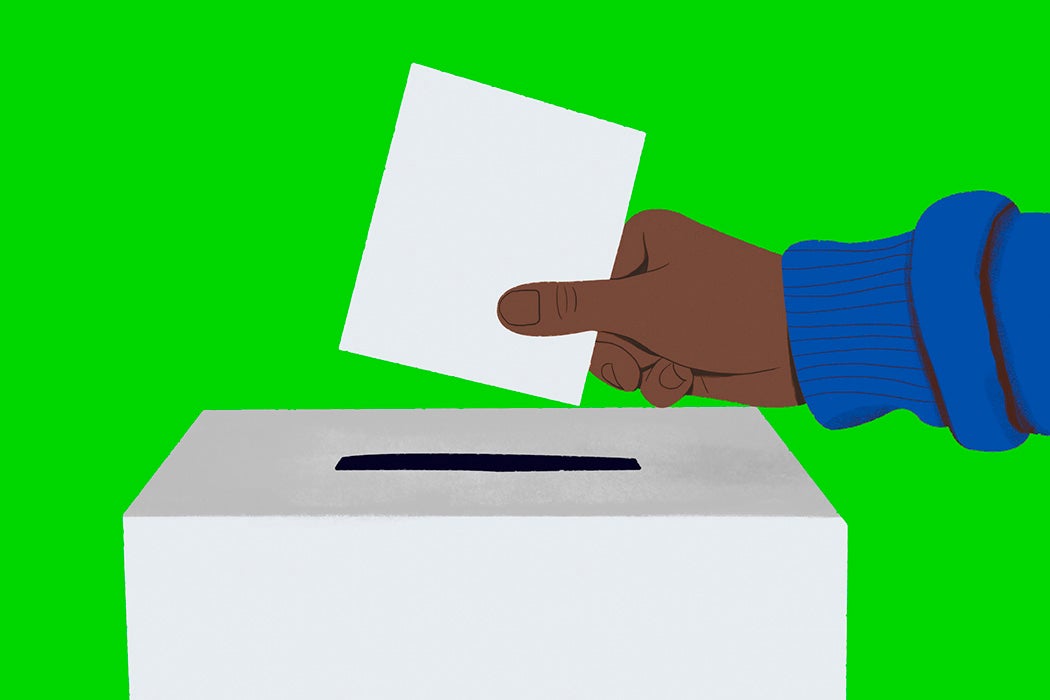With the 2024 US presidential election underway, questions about the effectiveness of engaging in electoral politics are again front and center. It’s a site of ongoing struggle, where voters wonder whether electoral participation can bring about substantial change, particularly to achieve environmental justice. Scholar Glen Sussman emphasizes that the US has assumed a leadership role on environmental policy, shaping how other countries act on climate reform and advancing a just transition. As documented by the Union for Concerned Scientists, former President Donald Trump has a significant track record on rolling back environmental protections and net zero targets in favor of expanding and cementing extractive industries. Meanwhile, Vice President Kamala Harris, though committed to climate action, voted in favor of allowing new leases for fracking in her tie-breaking vote on the Inflation Reduction Act and has suggested that she won’t ban the practice. It appears no candidate on a major party ticket has a pristine record of delivering on environmental justice.
Scholar-activist Angela Davis reminds us that “freedom is a constant struggle.” There must be many tools in the organizer’s toolkit to achieve environmental justice. Organizers vote for the best material conditions under which to organize. History has demonstrated that environmental justice movements have consistently re-negotiated with the state, particularly through voting, to advance regulatory protections and judicial victories.
Electoral politics isn’t only about who holds office but also about the administration officials and regulatory frameworks that those officials enforce. The 1994 Executive Order 12898, championed by environmental justice leaders Robert D. Bullard and Benjamin F. Chavis, Jr. and passed under President Bill Clinton, created a framework within the federal government to address disproportionate health and environmental impacts of policies and programs on low-income people and people of color. Scholars Luke W. Cole and Sheila R. Foster have written about how such legislation has empowered communities to use the courts and federal agencies to challenge environmental injustices, demand protections, and receive retributions. These legal challenges often hinge on the regulatory apparatus devised by elected officials. When communities vote for candidates who champion environmental protections, they elect administrations who appoint agency heads who shape the strategic direction of federal investment and judges more sympathetic to their cause.
Despite these successes, relying solely on the state to enact environmental justice has its limitations. Regulatory capture, where industries exert undue influence over government agencies, remains a serious concern, notes the Union of Concerned Scientists in the report cited above. Moreover, as evidenced by the rollback of many environmental regulations under the Trump administration, the state’s commitment to justice is often fragile and contingent on the current political climate. Electoral victories can be undone, regulations weakened or eliminated entirely. Countering the previous administration, a renewed commitment to institutionalizing environmental justice has been expressed under President Joseph Biden with the implementation of the Justice40 Initiative, which guarantees 40 percent of environmental benefits across federal agencies will flow to frontline communities, ensuring new investment for environmental self-determination in vulnerable areas. But it’s a back-and-forth process that’s dependent on the sitting administration. Voting, when utilized as the only tool for societal change, is fraught, as the actors and administrations are always in flux.
Weekly Newsletter
This is where community-based organizations and grassroots movements play an essential role, applying constant pressure and watchdogging federal administrations. The environmental justice movement is grounded in the efforts of local activists who organize outside of formal political channels to resist environmental harms, as witnessed in Warren County, North Carolina, where actions led by United Church of Christ and environmental groups forced the closure of a landfill contaminated by polychlorinated biphenyls (PCBs). These grassroots efforts mobilize communities, raise consciousness, and push for stronger regulations through direct action, offering an alternative form of political participation that complements voting but doesn’t depend entirely on state mediation. For instance, the Idle No More movement at Standing Rock led by the Standing Rock Sioux highlights how the pursuit of environmental justice sometimes requires resisting state-led initiatives that encroach on Indigenous sovereignty, sacred lands, and violate treaty rights.
As we consider the 2024 election, many voters may be impatient with the pace of change or the effectiveness of voting in delivering environmental justice. However, history shows that voting enables the election of candidates who can enact and enforce policies that protect vulnerable communities and ecosystems. Yet, it’s also clear that political participation must extend beyond the ballot box. Environmental justice movement building, public education, and direct action are all vital in holding the state accountable and pushing for justice, sovereignty, and autonomy. By combining community action with electoral politics, the movement for environmental justice can continue to push for a healthier, more equitable future.







